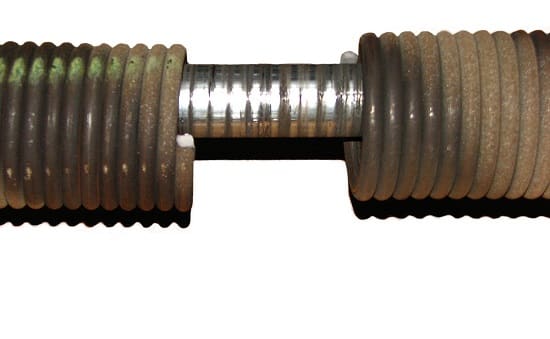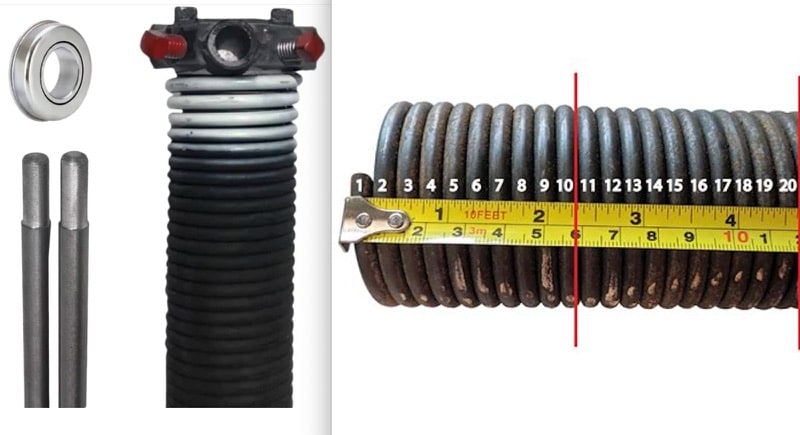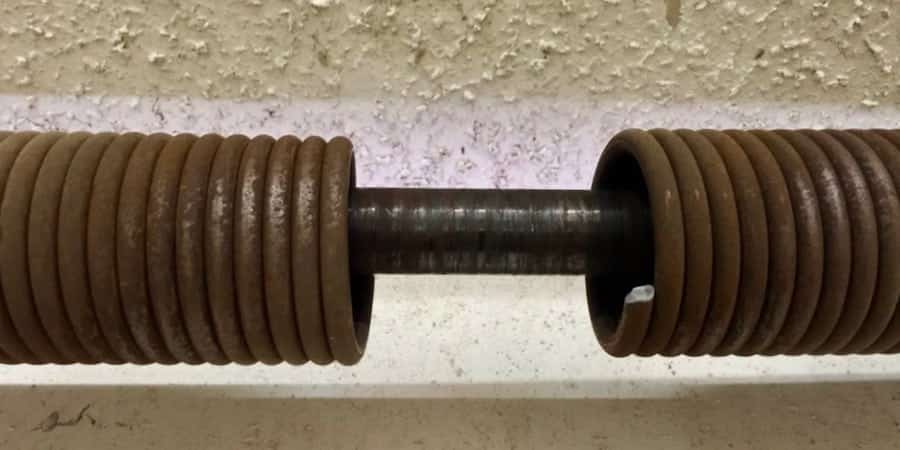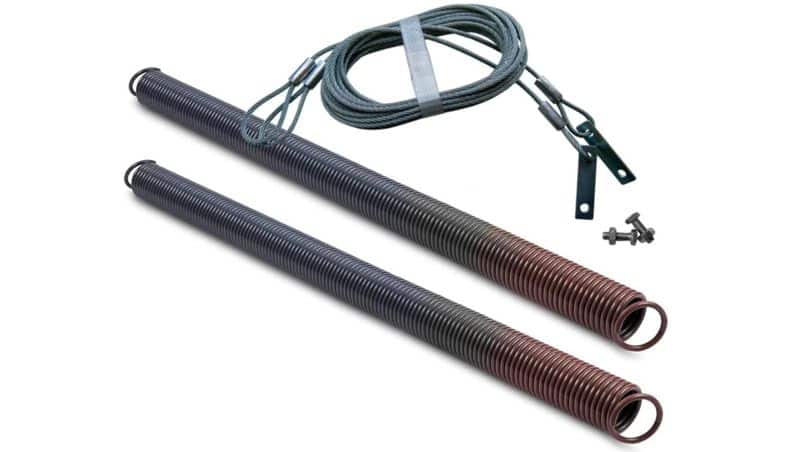Garage Door Spring Repair: Ensure Smooth Functionality of Your Garage Door
Garage doors play a pivotal role in ensuring the security and accessibility of our homes and properties. However, like any other mechanical system, garage doors are subject to wear and tear, and one of the most common issues homeowners face is broken garage door springs. In this comprehensive guide, we’ll delve into everything you need to know about garage door spring repair, from understanding the types of springs to step-by-step repair instructions and safety precautions.

Common Garage Door Spring Problems
- Misaligned Tracks: Misalignment of garage door tracks can put strain on the springs, leading to premature wear and breakage.
- Rust and Corrosion: Exposure to moisture and environmental factors can cause rust and corrosion, weakening the springs over time.
- Lack of Lubrication: Insufficient lubrication of moving parts can increase friction, putting additional stress on the springs.
- Excessive Wear and Tear: Regular use of the garage door without proper maintenance can result in wear and tear of the springs, eventually leading to failure.
- Incorrect Spring Tension: Improper tension adjustment of garage door springs can affect the door’s balance and cause premature wear.
- Poor Installation: Incorrect installation of garage door springs can result in uneven tension distribution and eventual failure.
Before diving into the repair process, it’s essential to understand the role of garage door springs. There are two main types: torsion springs and extension springs. Torsion springs are mounted above the garage door opening and are known for their durability and smoother operation. Extension springs, on the other hand, are installed on either side of the door and stretch and contract to support the door’s weight.

Common Signs of Broken Garage Door Springs
Identifying broken garage door springs early is crucial to prevent further damage and ensure safety. Some common signs include difficulty opening or closing the door, uneven movement, and loud banging noises during operation.
Safety Precautions
Safety should always be a top priority when dealing with garage door springs. Before attempting any repairs, it’s essential to wear protective gear, including safety glasses and gloves. Additionally, disconnecting the power to the garage door opener and ensuring the door is securely supported are crucial safety measures.
Temporary Repairs for Broken Springs
In some cases, homeowners may opt for temporary repairs to secure the door temporarily until professional help arrives. However, it’s essential to understand that temporary fixes should only be used as a short-term solution, as they may compromise the door’s functionality and safety.
DIY vs. Professional Repair
While some homeowners may consider DIY garage door spring repair to save money, it’s important to weigh the risks and benefits carefully. DIY repairs require specialized tools and knowledge of garage door systems, and attempting repairs without the necessary expertise can lead to further damage or injury. Hiring professional garage door repair services ensures that the job is done safely and efficiently.

Contact Us
Tools and Equipment Required
Whether you’re attempting a DIY repair or hiring a professional, having the right tools and equipment is essential for a successful outcome. Some essential tools include winding bars, vice grips, and a sturdy ladder, while safety equipment such as gloves and safety glasses are crucial for protecting yourself during the repair process.
Step-by-Step Guide: Removing Garage Door Springs
Removing broken garage door springs requires careful attention to detail and adherence to safety protocols. Before starting, it’s essential to release the tension from the springs and secure the door in place to prevent accidents. Once the door is secured, carefully disconnect the springs from the pulleys and brackets, taking care to avoid sudden movements.
Garage Door Spring Replacement Process
Once the broken springs are removed, the next step is to install new ones correctly. It’s essential to choose springs that are the correct size and weight capacity for your garage door and to follow manufacturer instructions carefully. Adjusting the tension of the springs ensures smooth and balanced operation of the door.
Garage Door Spring Kits
For homeowners looking to tackle garage door spring repair themselves, there are various kits available in the market that include all the necessary components for the job. When choosing a kit, consider factors such as the type of spring, door weight, and compatibility with your garage door system.
Importance of Regular Maintenance
Preventive maintenance is key to prolonging the lifespan of your garage door springs and ensuring reliable operation. Regular inspections and lubrication of moving parts can help identify issues early and prevent costly repairs down the line. Professional maintenance services can also help address any underlying issues and keep your garage door in optimal condition.

Comparison of Torsion and Extension Springs
| Feature | Torsion Springs | Extension Springs |
| Location | Mounted above the door opening | Installed on either side of the door |
| Functionality | Twist to generate torque | Stretch and contract to support weight |
| Durability | Generally more durable | Prone to wear and tear over time |
| Space Requirement | Require less space for installation | Require more space for installation |
| Cost | Typically more expensive | Generally less expensive |
| Maintenance | Require less maintenance | May require more frequent maintenance |
| Safety | Considered safer to operate | May pose safety risks if not properly installed or maintained |
FAQs
- How do I know if my garage door spring is broken?
- Look for signs such as difficulty opening or closing the door, uneven movement, or loud banging noises during operation.
- Can I replace garage door springs myself?
- While DIY repair is possible, it’s recommended to hire professional services for safe and efficient repairs.
- What tools do I need for garage door spring repair?
- Essential tools include winding bars, vice grips, and a sturdy ladder, along with safety equipment such as gloves and safety glasses.
- How often should I inspect my garage door springs?
- It’s recommended to inspect garage door springs annually and lubricate moving parts regularly to prevent damage and ensure smooth operation.
- Are there any risks associated with temporary garage door spring repairs?
- Temporary fixes should only be used as a short-term solution, as they may compromise the door’s functionality and safety.
Conclusion
Garage door spring repair is a task that requires careful attention to detail and adherence to safety protocols. By understanding the different types of springs, common signs of damage, and safety precautions, homeowners can address issues promptly and ensure the smooth functionality of their garage doors. Whether opting for DIY repairs or hiring professional services, prioritizing safety and proper maintenance is essential for keeping your garage door in top condition.
Contact Us
